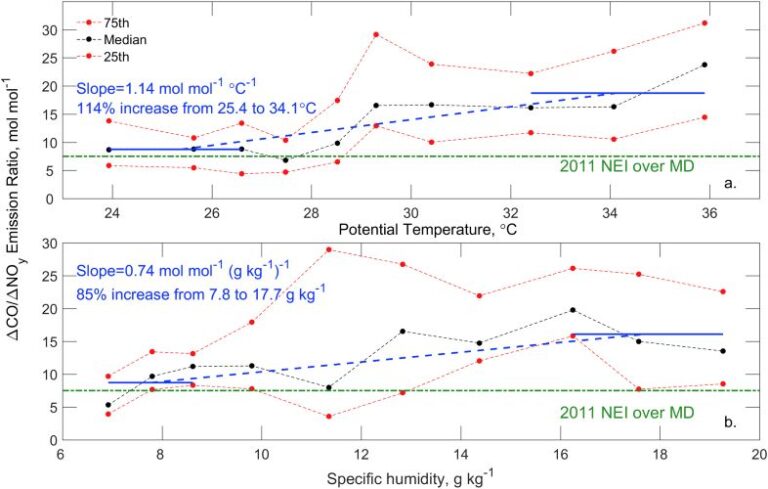
ESSIC/CISESS Professors Russell R. Dickerson and Ross Salawitch as well as ESSIC/CISESS Assistant Research Professor Hao He have a new paper in Atmospheric Environment titled “Using near-road observations of CO, NOy, and CO2 to investigate emissions from vehicles: Evidence for an impact of ambient temperature and specific humidity”. The paper’s co-authors also include Dolly Hall, whose Ph.D. research partly consists of this paper, Xinrong Ren, and Timothy Canty from the University of Maryland’s Department of Atmospheric and Oceanic Science. Other co-authors from outside the University of Maryland include Jennifer C. Hains, Daniel C. Anderson, and Cory R. Martin. The work was performed in collaboration with the Maryland Department of the Environment.
For the study, the researchers investigated the impact of vehicle emissions of nitrogen oxides (NOx) and carbon monoxide on ambient temperatures and specific humidity. Previous studies have shown that NOx emissions in the US EPA’s National Emissions Inventory (NEI) are overestimated relative to observations in the summer and possibly for an annual average. This study suggests that this overestimation may be corrected by accounting for the temperature sensitivity of mobile NOx running emissions within the Motor Vehicle Emission Simulator (MOVES). Future work will focus on improving MOVES by adjusting parameters controlling the impact of temperature and humidity on emissions to better represent the behavior of real-world vehicular emissions.
To access the article, click here: “Using near-road observations of CO, NOy, and CO2 to investigate emissions from vehicles: Evidence for an impact of ambient temperature and specific humidity”






